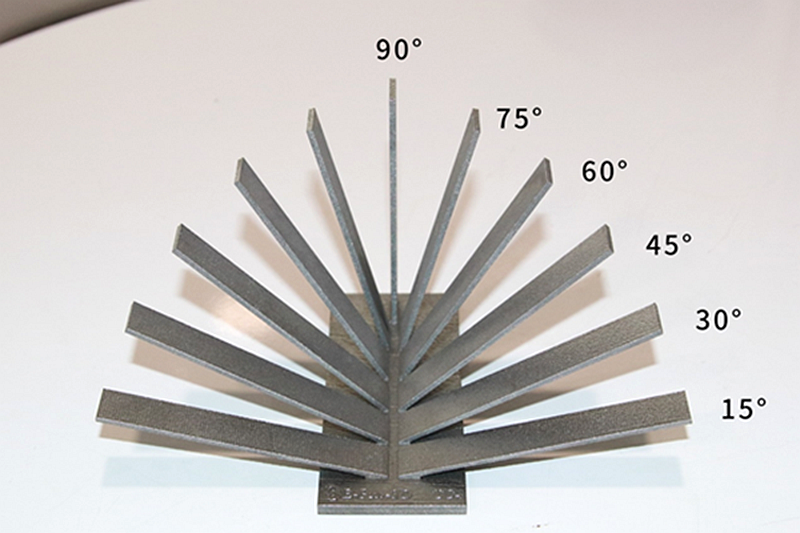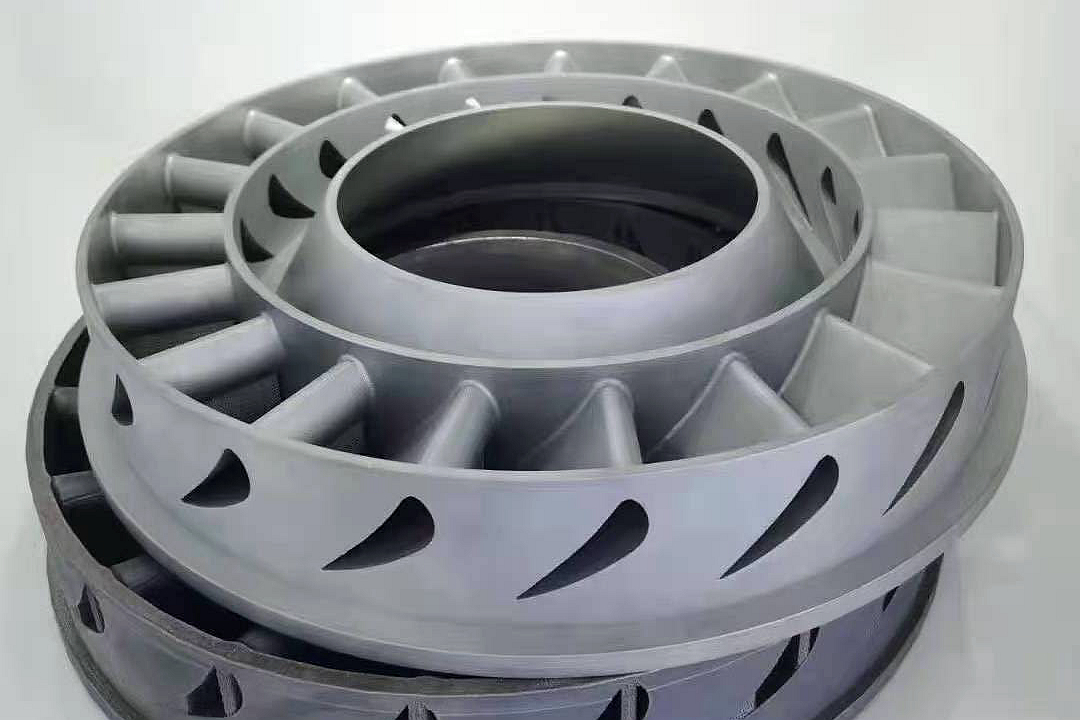Working Cabin Specifications for WAAM High-Temperature Alloys
Wire and Arc Additive Manufacturing (WAAM) transforms how high-performance industries produce complex, large-scale parts from high-temperature alloys. WAAM technology combines the advantages of additive manufacturing with the robustness of welding techniques, making it particularly suitable for materials such as Inconel, Hastelloy, and Titanium alloys. However, producing reliable, high-quality parts from these alloys requires an optimized environment, especially when aiming for precision and durability in demanding applications. It is where the specifications of the WAAM working cabin become crucial. This blog explores the critical working cabin specifications for WAAM printing of high-temperature alloy parts, materials, manufacturing processes, post-processing steps, testing, and end-use applications.

The Role of the Working Cabin in WAAM
A working cabin is a controlled environment specifically designed to meet the stringent requirements of the WAAM process. Its primary purpose is to ensure a stable atmosphere for the additive process, minimize contamination risks, and enhance the quality and safety of WAAM-printed parts. Even a slight variation in environmental conditions—such as temperature or humidity—can impact the final part quality when dealing with high-performance superalloys.
Working cabins control oxygen levels, temperature, and humidity to maintain ideal conditions for welding and depositing high-temperature materials. The cabin significantly enhances the material's final properties and ensures consistent part quality by providing an inert atmosphere, stable temperature control, and efficient ventilation. Additionally, the cabin is essential in ensuring operator safety, as the WAAM process involves high temperatures, molten metals, and potentially harmful fumes.
Suitable Materials for WAAM in a Controlled Working Cabin
WAAM's versatility allows it to work with a variety of high-temperature alloys, each of which has specific requirements in terms of environmental control within the working cabin.
Inconel Alloys
Inconel is widely used for high-temperature applications because of its exceptional oxidation and corrosion resistance. Inconel alloys, such as Inconel 718 and Inconel 625, are frequently applied in industries like aerospace and power generation. When working with Inconel in WAAM, an inert atmosphere—often created using argon or nitrogen gas—is essential to prevent oxidation. In addition, precise control over temperature during the WAAM process helps maintain the alloy's properties and prevent thermal deformation.
Hastelloy Alloys
Hastelloy alloys are known for their resistance to corrosion and heat, making them ideal for chemical processing and nuclear applications. Alloys like Hastelloy C-276 and Hastelloy X require a carefully regulated atmosphere to prevent reactions that could compromise their integrity. Given Hastelloy's low thermal conductivity, localized heat buildup can be a concern during WAAM. Therefore, the working cabin must offer robust temperature control to ensure even heat distribution and avoid unwanted distortions.
Titanium Alloys
Titanium alloys, such as Ti-6Al-4V, are lightweight, strong, and corrosion-resistant, making them popular in the aerospace and automotive industries. Titanium is highly reactive with oxygen at elevated temperatures, which can lead to embrittlement. Thus, working cabins for Titanium require an oxygen-free atmosphere to preserve the alloy's strength and ductility. Additionally, strict control over humidity is essential since moisture can compromise the material's quality during the WAAM process.
Essential Working Cabin Specifications for High-Quality WAAM Production
Creating high-quality parts through WAAM requires a carefully optimized working cabin environment. Key cabin specifications contribute significantly to ensuring the consistent quality and reliability of the final superalloy parts.
Atmosphere Control
An inert atmosphere prevents oxidation and contamination, mainly when working with reactive alloys like Titanium or high-temperature alloys like Inconel and Hastelloy. Using gases like argon or nitrogen creates an oxygen-free environment within the cabin, which is essential in Vacuum Investment Casting. The controlled atmosphere prevents unwanted chemical reactions during deposition, enhancing alloy performance and durability.
Temperature and Humidity Control
Temperature stability is essential for controlling thermal expansion and contraction rates in superalloy parts, minimizing the risk of warping or cracking. Working cabins have temperature control systems to maintain optimal conditions, ensuring consistent quality during deposition. Additionally, humidity control is critical for avoiding moisture absorption, which can compromise the quality of certain alloys. Low-humidity environments are especially important for Superalloy Precision Forging, as excess moisture can interfere with the precision required in forging processes.
Ventilation and Fume Extraction
The WAAM process generates fumes and fine particles that must be efficiently managed for operator safety and part quality. Working cabins have high-quality ventilation and fume extraction systems to maintain a clean environment. It is particularly essential when working with alloys that release harmful fumes, such as during Superalloy CNC Machining, where precise cutting and high temperatures are involved. Effective fume extraction ensures a safe workspace and prevents contamination of the printed parts.
Heat-Resistant Materials and Insulation
Given the high temperatures involved in WAAM, working cabins must be constructed from heat-resistant materials. The cabin walls, floors, and other components should have high thermal tolerance to contain the intense heat generated during the process. Additionally, insulation is essential to protect surrounding equipment and maintain stable temperatures, critical for Powder Metallurgy Turbine Discs, which demand stable heat conditions for accurate material shaping.
Safety Protocols and Operator Controls
Safety is paramount in a WAAM working cabin due to the high-temperature materials and molten metal. Safety features include automated emergency shutoff, fire suppression, and protective barriers. Operator controls provide real-time monitoring of temperature, oxygen levels, and humidity. It ensures a safe and controlled environment akin to Superalloy Single Crystal Casting, where environmental stability is crucial for crystal integrity.
Post-Processing for WAAM Superalloy Parts
Although WAAM can produce large, complex parts, post-processing steps are essential for enhancing the mechanical properties and surface finish of high-temperature alloy parts.
Hot Isostatic Pressing (HIP)
HIP is a post-processing method used to eliminate internal porosity and enhance the mechanical properties of WAAM-produced parts. This process subjects the part to high temperature and pressure in a controlled environment, increasing density and improving structural integrity. HIP is particularly beneficial for superalloys like Inconel and Hastelloy, which must be free from internal defects to ensure durability in extreme conditions.
Heat Treatment
Heat treatment is another post-processing method used to optimize the mechanical properties of WAAM parts. By carefully controlling the heating and cooling process, heat treatment can relieve residual stresses, improve strength, and enhance hardness. Heat treatment is precious for high-performance parts in aerospace and automotive applications.
Surface Finishing and CNC Machining
The WAAM process often leaves parts with a rough surface finish, so additional finishing steps are necessary to meet specific tolerance and surface quality requirements. CNC machining is frequently used to achieve precise dimensions, while polishing, grinding, or shot peening can improve surface finishes and fatigue resistance.
Testing and Quality Assurance
To ensure that WAAM-produced parts meet industry standards, thorough testing assesses dimensional accuracy, internal integrity, and mechanical properties.
Dimensional Accuracy and Surface Quality Inspection
Dimensional inspection techniques such as Coordinate Measuring Machines (CMM) and laser scanning verify that the parts meet specified dimensions and tolerances. Surface quality inspection is also essential, as WAAM parts must meet strict criteria for smoothness and finish to perform optimally in high-stress applications.
Non-Destructive Testing (NDT)
NDT methods, including X-ray, ultrasonic, and CT scanning, are critical for identifying internal defects without damaging the parts. These methods help verify the structural integrity of WAAM-printed superalloy parts, ensuring they are free from internal flaws that could compromise performance in critical applications.
Mechanical Property Testing
Mechanical testing, such as tensile strength, fatigue resistance, and hardness testing, is conducted to verify that the material meets the required performance standards. For high-temperature alloy parts, these tests are essential to confirm that the printed parts can withstand the extreme operational conditions they will face.
Industries and Applications for WAAM High-Temperature Alloy Parts
WAAM is used across several high-performance industries that require durable, high-precision components. The aerospace, energy, oil and gas, and automotive sectors benefit significantly from WAAM's ability to produce reliable, high-quality parts in high-temperature alloys.
Aerospace and Aviation
WAAM is commonly used to produce complex components for aerospace applications, such as turbine blades, engine parts, and exhaust systems. The controlled environment of the working cabin ensures that these high-stress parts maintain their dimensional accuracy and durability for safe operation, which is critical for superalloy exhaust system parts in aerospace applications.
Power Generation
High-precision components like turbine blades, heat exchangers, and reactor parts are essential in Power Generation. WAAM allows the production of these components in materials that can withstand high temperatures and pressures, such as Inconel and Hastelloy. These materials are vital for maintaining efficiency and reliability in power plant operations.
Oil and Gas
In the Oil and Gas industry, WAAM-produced parts include valves, pumps, and other components that operate in corrosive environments. Working cabins ensure these parts meet stringent durability and corrosion resistance requirements in extreme conditions, making them ideal for offshore applications and other harsh environments.
Automotive
WAAM technology is applied to engine components, exhaust systems, and structural parts in the Automotive industry. The ability to control the working cabin environment enables the production of high-quality, lightweight components in materials like Titanium alloys, which enhance vehicle performance and fuel efficiency.
FAQs
What are the primary environmental requirements for a WAAM working cabin?
How does atmosphere control in the cabin impact the quality of superalloy parts?
Why is ventilation and fume extraction essential in WAAM cabins?
What post-processing steps are necessary to enhance WAAM parts printed in high-temperature alloys?
Which industries most benefit from WAAM high-temperature alloy parts printed in a controlled cabin environment?



